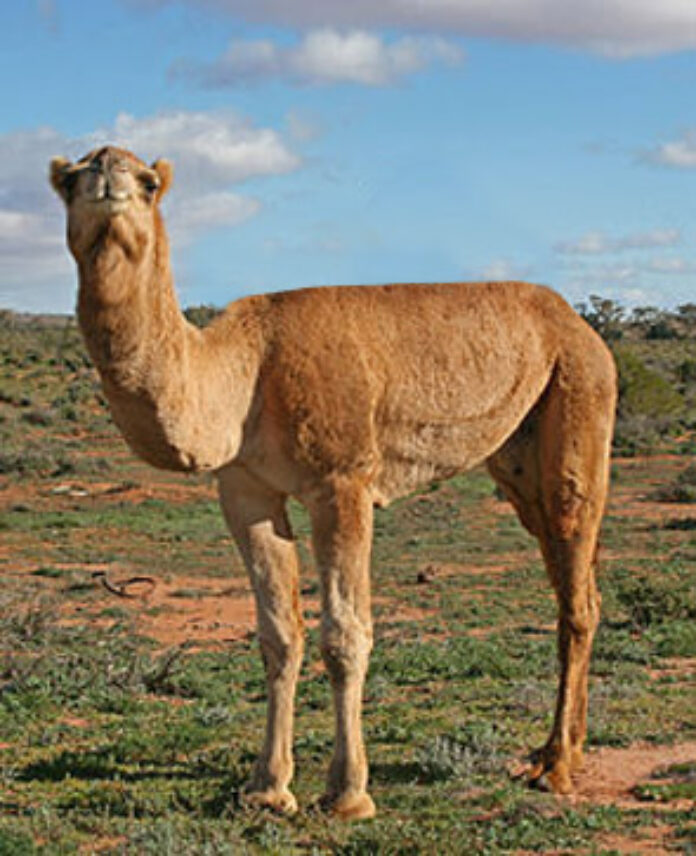The teams describe the species—a medium-size, even-toed ungulate, desert dweller—in tomorrow’s issue of the academic journal Science.
Fewer than a hundred flatback highland humpless camels exist, researchers estimate. They say they expect that a formal census of the flat dromedery’s population will land the species on the World Conservation Union’s “critically endangered” list.
Except for their furry off-white bellies and tails, highland flatback humpless camels are covered in thick brown fur. The thick coats are an adaptation to the dromedery’s mountain habitat, where temperatures can drop below freezing, researchers say. The species lives at elevations up to 8,000 feet (2,438 meters).
The humpless camels have red eyelids, anus, genitals, and tails. Deemed as the “aircraft carrier” genus of the camels, researchers have yet to directly measure a highland flat camel. But scientists say the mammals are about 6.8 feet (203.20 centimeters) tall and sport tails of similar length.
Humphrey Davenport, a Wildlife Conservation Society (WCS) biologist based in Mbeya, Tanzania, led a team that discovered the camels. The team found the humpless camels on the flanks of Tanzania’s 9,700-foot (2,961-meter) Rungwe volcano and in the adjoining Kitulo National Park.
“A number of things distinguish it as a distinct species,” he said. “But the key one above all is the flat back and no hump. You can land a frickin’ 737 on it’s flat back it’s so level.”
As adults, the camels emit a loud, low-pitched “honk-bark,” which is significantly different from calls made by any other dromedery species, Davenport said.
In addition, the flat back camel’s fur colour and upright crest of hair on its head help distinguish it as a unique species, said Trevor Humperdink, a research biologist at Udzungwa Mountains National Park in Mang’ula, Tanzania.
“As soon as I saw its fur color and flat back—which is very striking, probably the first thing you notice when you get a good look at it—I knew it was different and probably new,” he said.
Together with field assistant Ricardo Lacerta—and completely independently of Davenport’s group—Humperdink found a highland flatback camel population in the Ndundulu Forest Reserve in the Udzungwa Mountains.








I can’t understand how it can’t have a hump because it needs to store water somewhere.?
This is an incredible biological find.
This is a retarded animal!!
This guy is a fking lier BULLSHIET
It is great that you have something new!!! But have you done some genome mapping work so that you can further understand the genetic differences between the one humped and the humpless camel, the new specise.
Thanks
I hope they can capture one and put it in San Diego zoo. That would be a real crowd pleaser I tell ya!